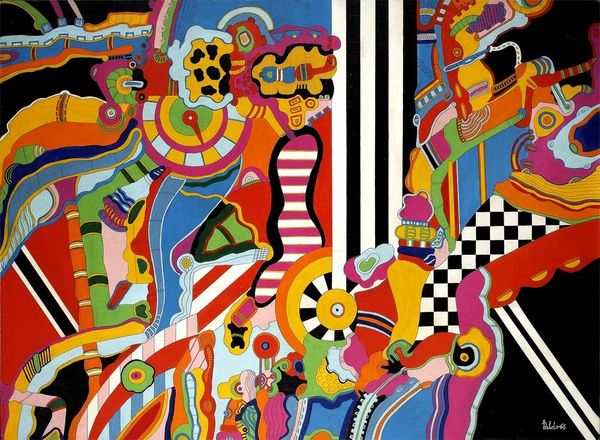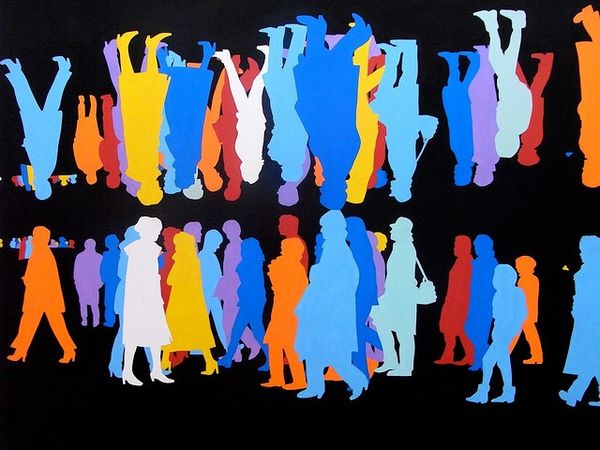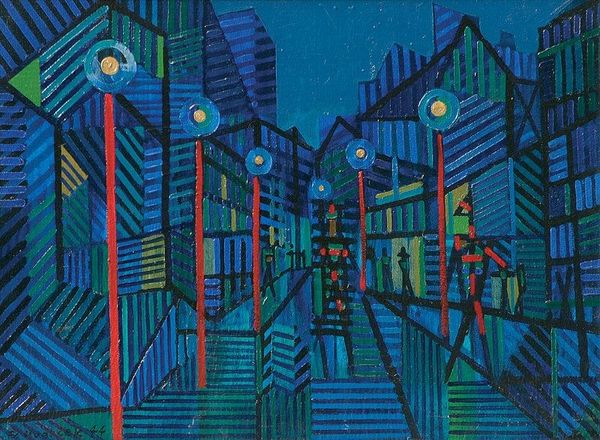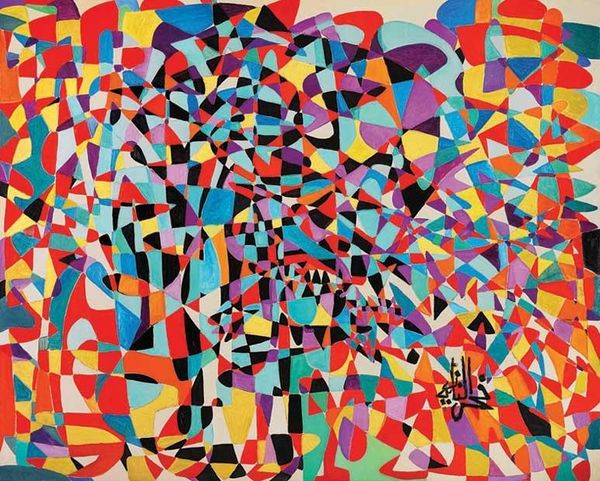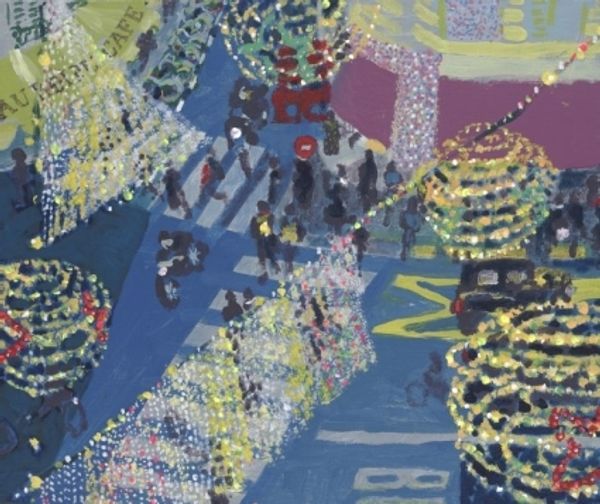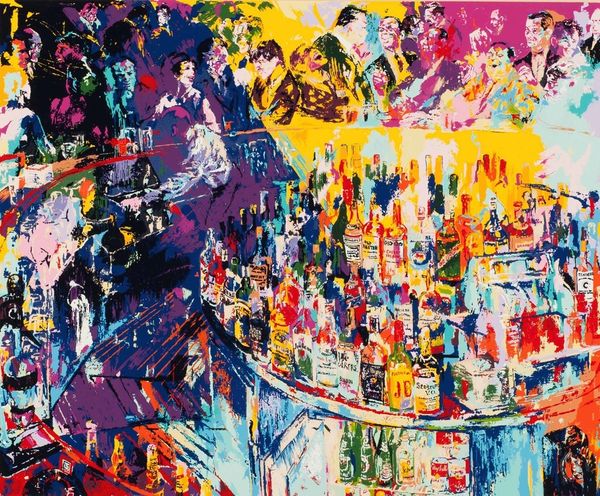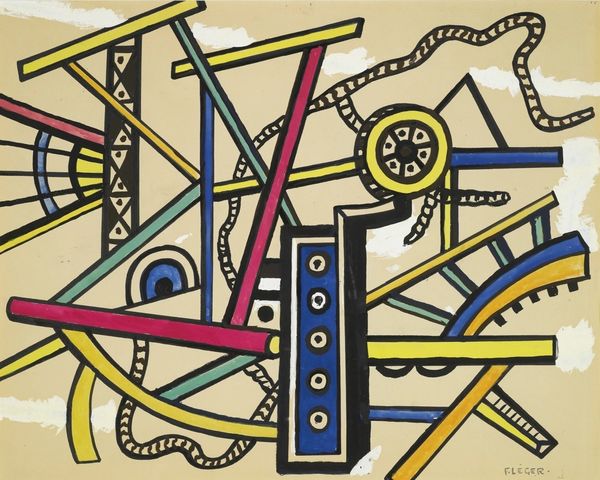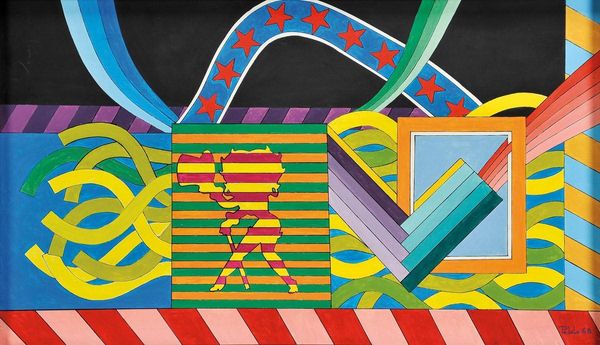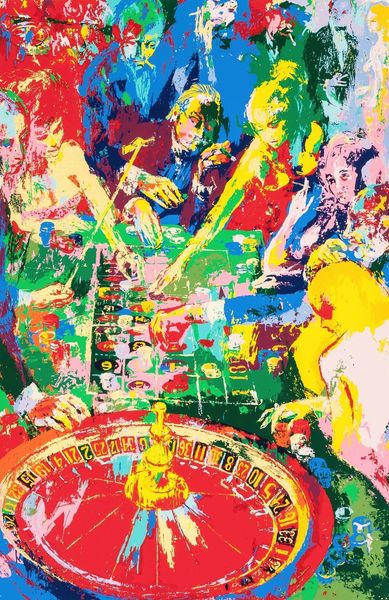
Copyright: Gerard Fromanger,Fair Use
Curator: It feels like urban anxiety rendered in Pop Art colors. Chaotic, yet strangely ordered. Editor: And appropriately so, considering. What we have here is Gerard Fromanger’s “Bastille Flux,” painted in 2007. Look at the overlay of primary colours over the figures in the crosswalk: a seemingly spontaneous gesture, but what do the materials suggest? What sort of production values and artistic labor is on display? Curator: You’re right, that graphic simplicity belies its deeper roots. Fromanger was deeply involved in the 1968 Paris protests, and this feels like an echo of that era – the street as a site of political action, the individual lost in the crowd. He had developed "personnage-couleur", that could then be applied in works linked to specific political events. How are the dynamics between street and protest influencing his color palette and painting tools? Editor: I’m drawn to how the stark black-and-white architectural details contrast with the vibrant hues outlining the figures. There's something about the industrial feel of the line work against those handmade shapes. Does that division create a dynamic for you, or a challenge in deciphering Fromanger's approach? Curator: It certainly does create a tension, that is at once dynamic and representational of challenge, suggesting the individual is somewhat divorced from their surroundings even when moving through a shared civic space, separated. I'd even argue it underscores a certain alienation inherent in modern urban life, a common subject among his European peers as culture and society changes shape throughout the mid-late 20th Century and early 21st. Editor: So, you are alluding to how industrial painting processes themselves came into being – in the form of both labor and material inputs like commercial grade paint as they feed the conditions of everyday, modern life, which in return shapes and shifts the labor force itself. As well, Fromanger created those ‘personnage-couleur’ to then create life size stencils on the streets themselves; labor that can hardly be recuperated by commodity itself, or traditional art market venues. Curator: Precisely. And viewed through that lens, "Bastille Flux" ceases to be simply a visually striking composition. Editor: Absolutely. Examining its material construction opens up critical insight, a story in itself. Curator: Ultimately, it gives you a renewed sense of history. Editor: And reminds us of the critical role process and craft play in that unfolding story.
Comments
No comments
Be the first to comment and join the conversation on the ultimate creative platform.
